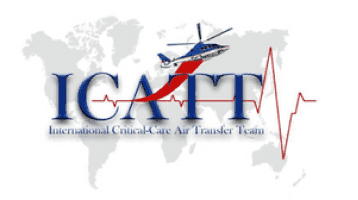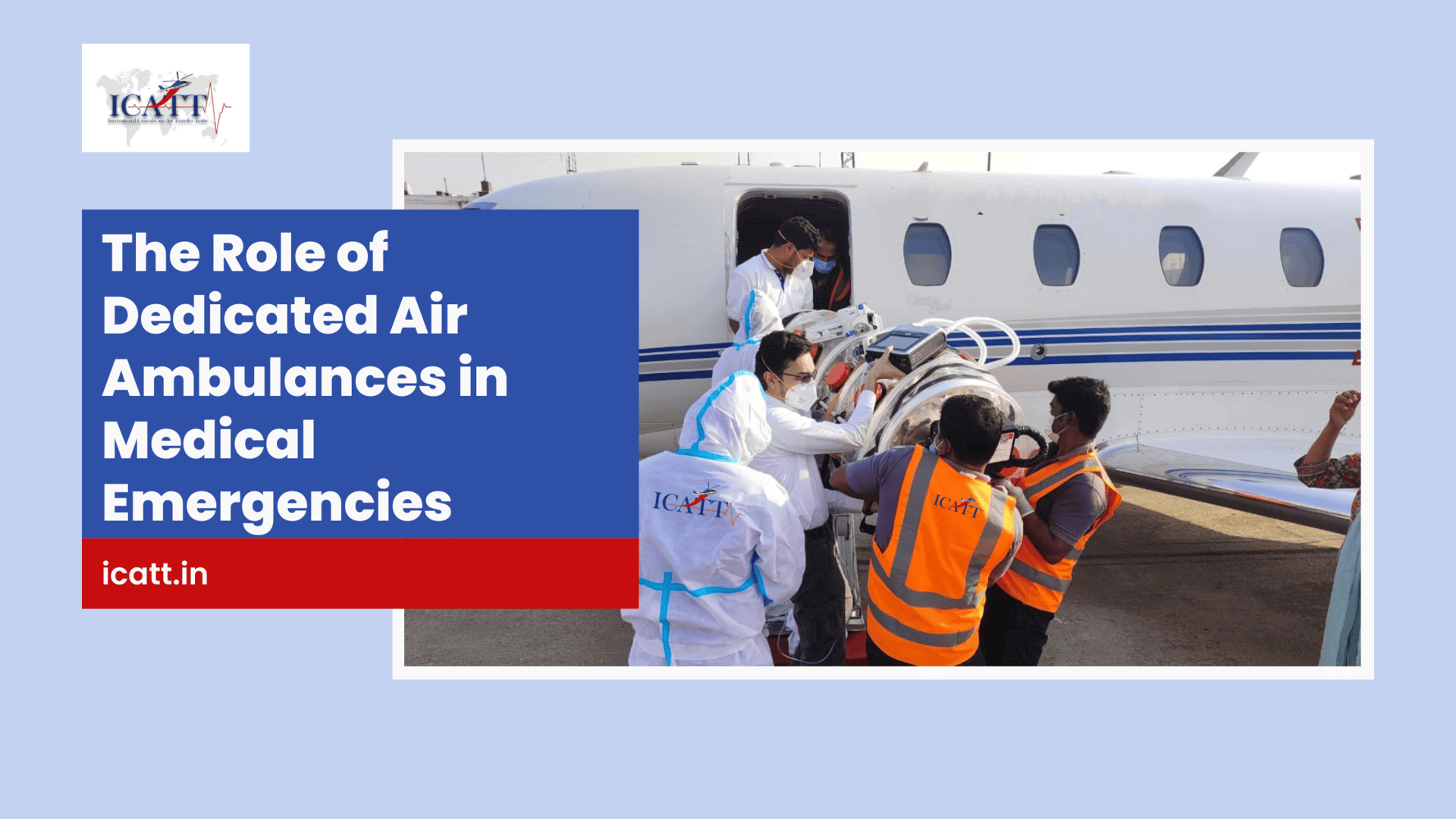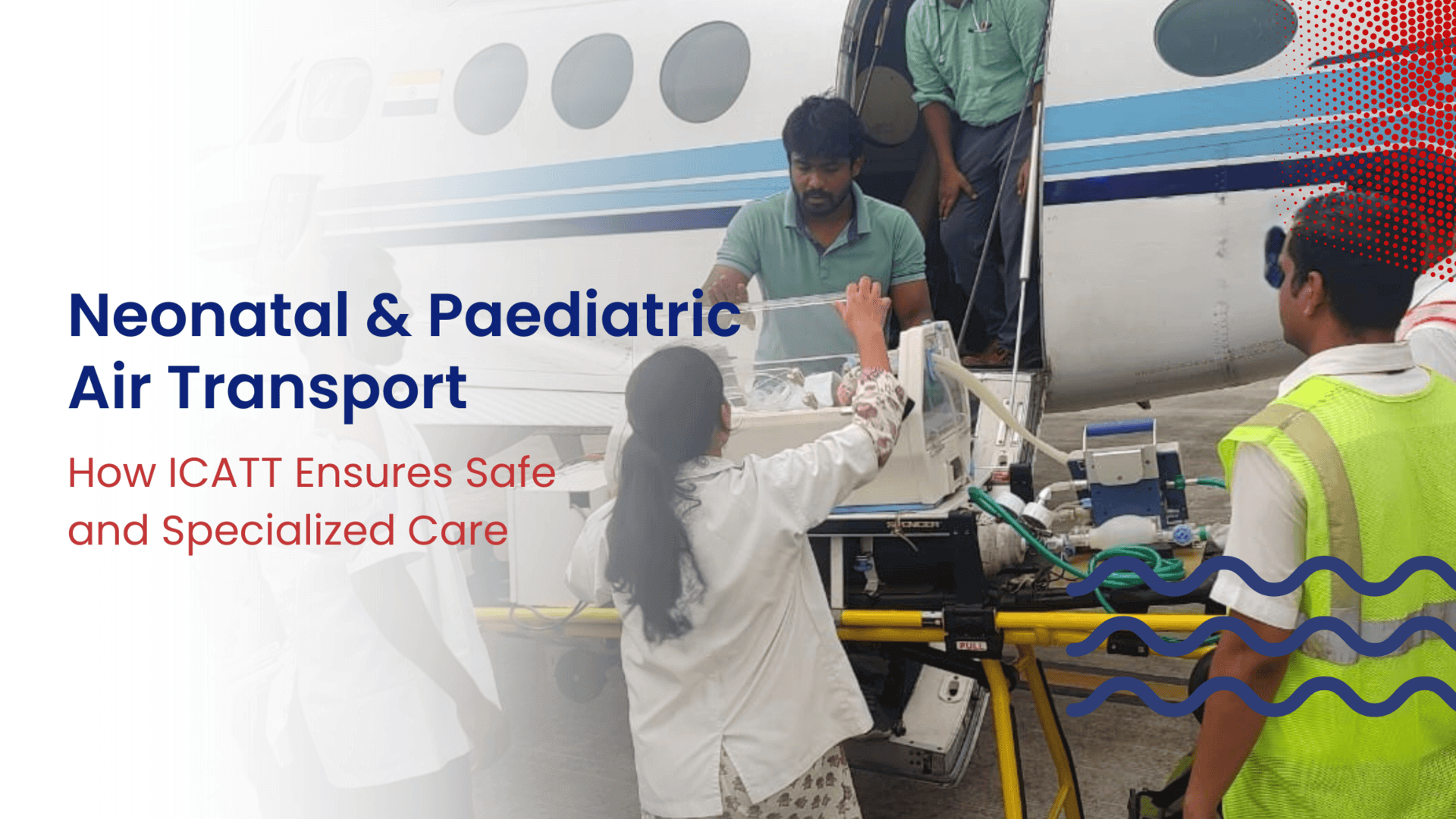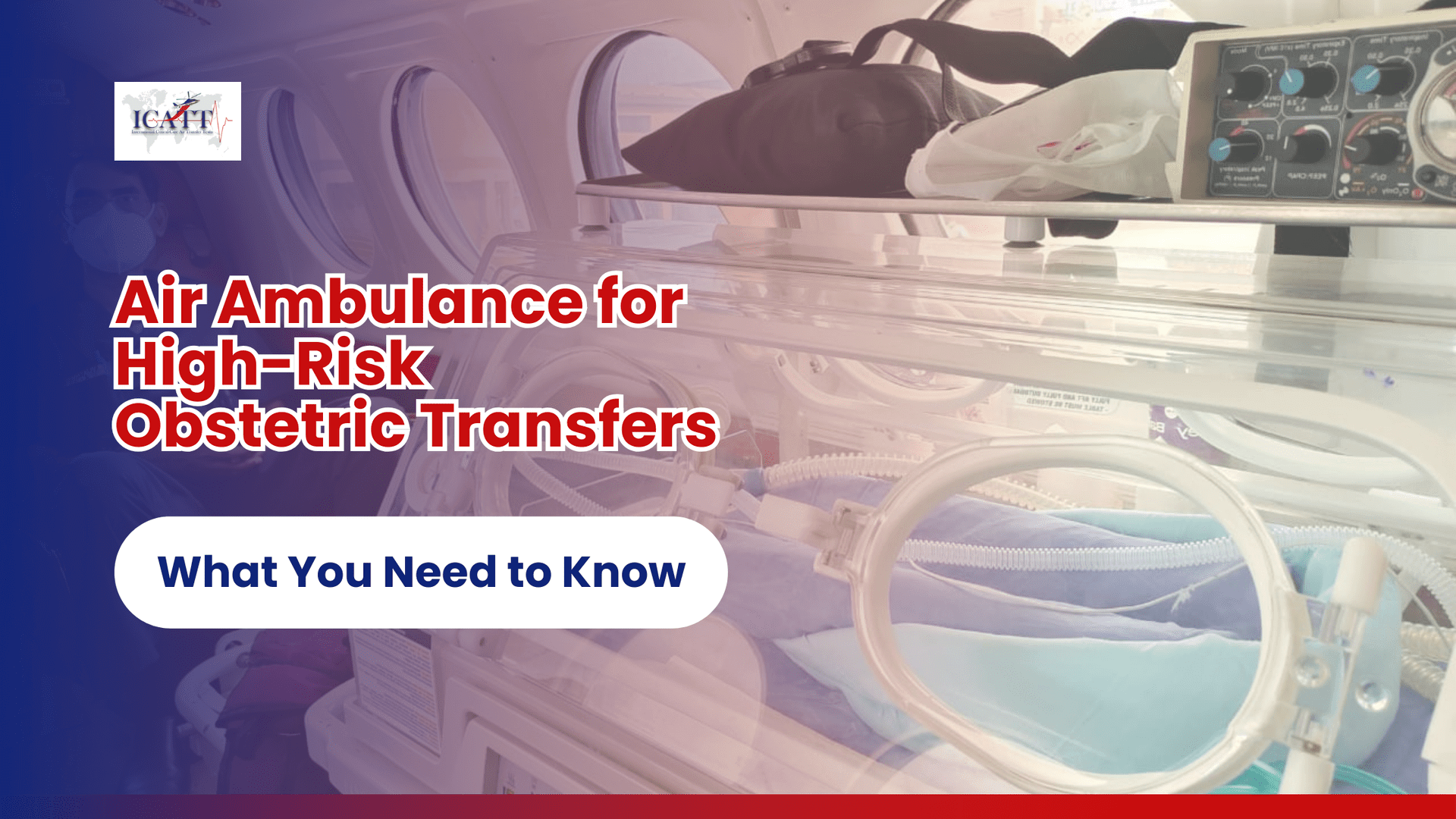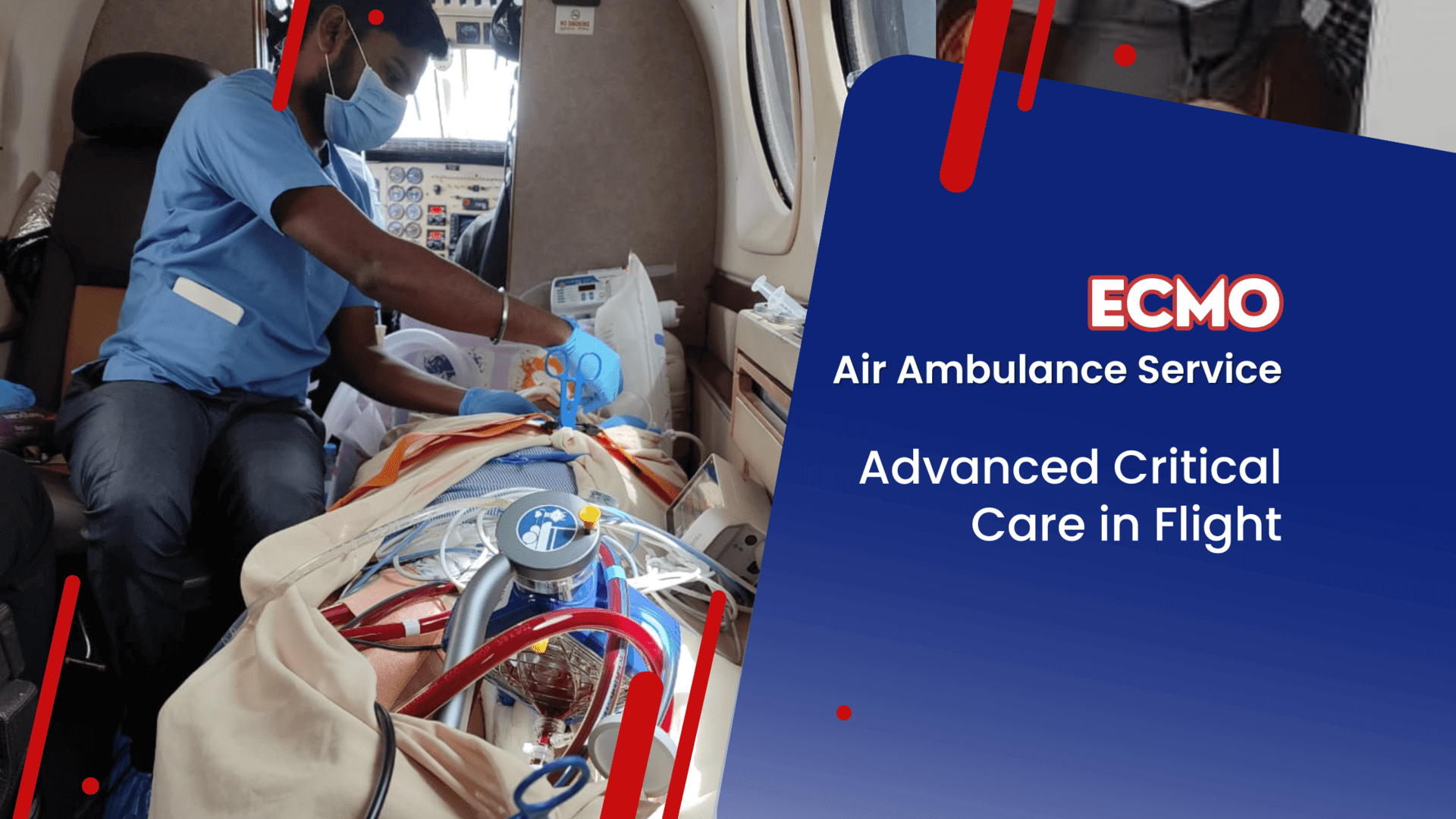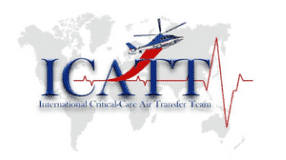During the second wave of COVID-19, all the sectors of the medical field were tested for their maximum potential, efficiency and quick response times. The situation was such that many of the patients could not receive treatments in their hometowns or cities. So many of them had to be transported to other cities.
Medical aviation is in itself a challenging atmosphere. Corona pandemic brought many changes to both ground and air rescue. Transferring of coronavirus patients was challenging to the helicopter emergency medical services (HEMS) and fixed-wing emergency medical services (AEMS). In this blog, let us look in detail at the challenges faced by the air ambulances and how they have overcome them and saved the lives of many coronavirus patients.
What are the statistics saying?
In Pre-COVID times, the hiring rate of air ambulances was one or two per day, but this demand rose astronomically to 500% during the corona times. When ICATT started its services in 2017, the transfer rate was 15 to 20 critically ill patients a month. That number soon changed to 300 patients per month during the second wave of Corona to/from different parts of India. Though the patients were ready to bear the cost, the demand was so high that many patients were turned away, only due to the limited number of air ambulances equipped with isolation pods. The health ministry mandates the isolation pots for transporting COVID-19 patients. Many critical Non-COVID patients were also airlifted from other states.
Over 100 COVID-19 patients in an advanced stage of the disease have been airlifted from Bihar, Jharkhand, West Bengal, Uttar Pradesh, Chhattisgarh, Karnataka, Madhya Pradesh, and Odisha in the past couple of months. They underwent treatment at the major hospitals in Hyderabad.
Why did Air Ambulances face challenges during COVID-19?
Transporting critically ill patients is a difficult operation in the best of situations, but transporting COVID positive patients posed some unique challenges such as:-
- Coronavirus patients need urgent care because even if one day is lost, the patient can sleep into a critical condition.
- Due to the highly contagious nature of the virus, air ambulances had to take steps to ensure the crew’s safety and the medical staff accompanying the patient in the ambulance.
- Ambulances have to adhere to strict guidelines mandated by the health ministry, giving extra training and making special adjustments to the air ambulances.
- Since every state had its lockdown protocols, ambulances had to obtain additional permissions from the officials of the source and the destination cities so that the patient transfer smoothly.
- Isolation pods were mandatory to transport COVID-19 patients, and there are very few air ambulance services equipped with these isolation pods.
- Though the air ambulances could transport the patients, the treating hospitals had a limited number of beds.
Dr Rahul Singh Sardar and Dr Shalini Nalwad, Co-founders and Directors of ICATT Air Ambulance Service, said in one of the leading newspapers that “The demand for air ambulances is much higher than last year.” Patients prefer Hyderabad, and there is some demand for Chennai too. “We are providing our service as per the requirements of the patient’s family,” Rahul Singh explained. The main step involves obtaining a No-Objection Certificate (NOC) from the District Collectors of the concerned pickup and destination cities.
How did ICATT meet the demand?
In response to the COVID-19 pandemic, an infection prevention standard operating procedure (SOP) was developed. HEMS missions have been using this SOP to overcome the challenges.
Rahul Singh Sardar, who runs the air ambulance service with Shalini Nalwad, says they procured isolation pods from Germany in the early days of the pandemic.
The team currently has three aircraft. Dr Sardar says the majority of critically ill patients want to be taken to Chennai or Hyderabad. The average age of the patients was the mid-20s to their late-30s.“ We assist the patients right from their residence to shifting them to the hospital in Hyderabad. Under the supervision of a team of doctors, we shift patients in an eight-seater King Air B200 aircraft, adhering to all Covid safety precautions.”, he explained. ICATT’s efficient team could bring a patient from Gujarat to Hyderabad within two hours in an air ambulance, since they could expedite all formalities, including NOCs.
Advancements in Air Ambulance to transport COVID-19
- Air-evacuation pod developed by Naval Aircraft – The Southern Naval Command, Kochi, developed this air evacuation POD, which isolates the patient during travel as a precaution in the pandemic situation.
- State-of-the-art German Isolation Pod is so secure, and the accompanying medical personnel mostly do not need to wear a PPE kit. Second, they can still have full access to the infected patient. This device can transport patients breathing normally or mechanically ventilated, even in enclosed jet cabins, small helicopters, and ground ambulance vehicles. Moreover, this German ISO POD is unique, as it remains airtight even when cabin pressure suddenly drops.
- Every Air Ambulance Provider established a standard operating procedure (SOP) which ensures that the PPE kit is handled appropriately during HEMS missions. All crew members received simulation training on these SOPs.
We at ICATT are with you throughout the transfer process. We also work with the officials and ensure a smooth transition. Reach our 24×7 service line at +91-9701111156.
